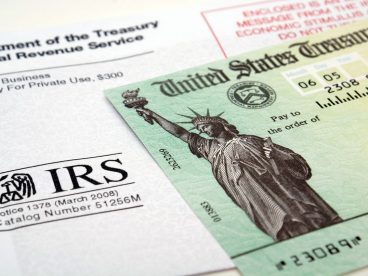Last updated 05/24/2024
By Christine Tran, 2020 Get It Back Campaign Intern
An amended return allows you to correct mistakes on a federal tax return after tax filing. You will need to submit Form 1040-X, Amended U.S. Individual Income Tax Return to the IRS. Learn what else you need to know before getting started.
Click on any of the following links to jump to a section:
- Do I need to file an amended return?
- When can I file an amended return?
- How do I file an amended return?
- Should I file an amended return to get my Child Tax Credit (CTC)?
- Should I file an amended return to get my stimulus checks?
- How long does it take for the IRS to amend my return?
- Resources
Do I need to file an amended return?
You should file an amended return if you need to change your:
- Filing status
- Income
- Deductions
- Tax credits
- Tax liability
- Dependents
You DO NOT need to amend a return if your tax return:
- Includes a math error
- Is missing a form or schedule, such as a W-2
The IRS may automatically correct any math errors to process your return. In both cases, the IRS will notify you if more information is needed.
Not sure if you need to file an amended return? Use the IRS Should I file an amended return? tool to help determine if you need to file.
When can I file an amended return?
You must wait until the IRS has processed your tax return before making corrections. If you are expecting a tax refund, wait until you receive it before filing an amended return.
An amended return can be filed either within 3 years after the date you filed your original return or within 2 years after the date you paid any tax owed, whichever is later.
How do I file an amended return?
Form 1040-X can be filed by mail or electronically, in certain cases. To prepare your amended return, you will need:
- A copy of your original tax return that you want to fix
- W-2s
- Forms
- Schedules
- Explanation for why you are amending your tax return
Make sure that your W-2s, forms, and schedules are for the same tax year as your tax return.
If your amended return shows that you owe more taxes, you should pay your taxes as soon as possible to reduce interest and penalty charges. You can pay your taxes online directly from your bank account for free using IRS Direct Pay. If paying taxes will cause you financial stress, contact your local Low Income Taxpayer Clinic (LITC) which may be able to help to lower or waive the amount owed.
Filing by mail:
- Follow the instructions and complete Form 1040-X by entering the correct information on the form. In addition, explain why you are filing an amended return.
- Sign and mail Form 1040-X to the address listed under “Where to File” in the form’s instructions.
Helpful tips if you are filing by mail:
- You do not need to submit your original tax return with your amended return. This is for your reference only.
- If you are amending more than one tax return, you will need to file a separate Form 1040-X for each tax return you are amending. You will need to mail each form in a separate envelope.
- Unlike filing electronically, you DO NOT need to submit new forms and schedules for your entire tax return. Only submit new forms and schedules that you have made changes to.
Filing electronically:
- Contact your tax software company to check if they can process your amended return electronically.
- Follow the tax software’s instructions to submit your amended return.
Helpful tips if you are filing electronically:
- You can electronically amend your Form 1040, 1040-SR, 1040-NR or 1040-SS/PR returns for tax year 2023, or the two previous tax years (2022 and 2021). To amend older returns, you must file a paper return by mail.
- If you are amending a prior year tax return that you originally filed by mail, then the amended return must also be paper filed by mail.
- Unlike filing by mail, you must submit all forms and schedules that were included in your original tax return, even if there are no changes to some of those forms and schedules.
- While filing electronically may allow the IRS to receive Form 1040-X faster, the processing time for mail and electronic amended tax returns are the same.
Should I file an amended return to get my Child Tax Credit (CTC)?
Yes, if you had eligible children living with you for more than half the year and you didn’t claim them on your tax return as dependents. More people than ever before are eligible to claim the 2021 expanded Child Tax Credit. If you filed a 2021 tax return but didn’t get the CTC, you can amend your tax return. You must claim the 2021 expanded CTC by April 18, 2025.
If there are other years that you didn’t claim the CTC on your tax return and you believe you were eligible, you can file an amended return for that year, following the IRS’ 3-year rule. For example:
- To claim the 2019 CTC, amend your return by April 18, 2023.
- To claim the 2020 CTC, amend your return by April 15, 2024.
Should I file an amended return to get my stimulus checks?
No, filing an amended tax return will not help you receive a stimulus check or a larger payment amount. The government issued three rounds of stimulus checks for continued COVID relief. If the IRS already determined that you are ineligible to get a stimulus check based on your 2018, 2019, or 2020 tax return, amending your tax return will not change this. Similarly, if you received your stimulus checks and one or more was less than you expected, filing an amended return will not change your payment amount.
If you did not qualify for a stimulus check based on your 2018, 2019, or 2020 taxes, or you did not receive the full amount of the stimulus check you believe you qualified for, you may be eligible to claim the Recovery Rebate Credit. If you are eligible, you can claim the Recovery Rebate Credit when you file your 2020 tax return for the first and second stimulus checks and claim the Recovery Rebate Credit on your 2021 tax return to claim the third stimulus check.
How long does it take for the IRS to amend my return?
The IRS is experiencing delays in processing amended returns that are mailed or filed electronically. The IRS processes amended returns in the order they are received.
Your amended return can take up to:
- 3 weeks from the date you file it to show up in the IRS system.
- 20 weeks to process.
Amended returns may take longer than 20 weeks to process if the return is incomplete, has errors, is unsigned, is associated with identity theft or fraud, or includes Form 8379, Injured Spouse Allocation. In some cases, the IRS may contact you if more information is needed to process your return.
You can track the status of your amended return around three weeks after you have filed. Visit “Where’s My Amended Return?” or call 866-464-2050. Both these tools are available in English and Spanish.
Resources
- Form 1040-X, Amended U.S. Individual Income Tax Return, Frequently Asked Questions – Internal Revenue Service (IRS)
- Should I File an Amended Return? Tool – Internal Revenue Service (IRS)
- Where’s My Amended Return? Tool – Internal Revenue Service (IRS)









